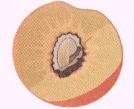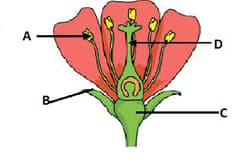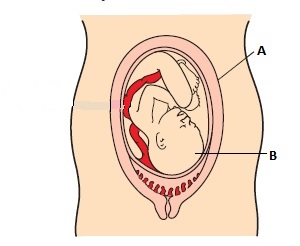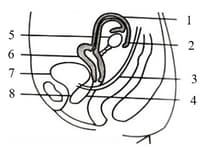Sexual Reproduction
Sexual Reproduction: Overview
This Topic covers sub-topics such as Flowers, Fruits, Female Reproductive System, Menstrual Cycle, Male Reproductive System, Uterus, Placenta, Ovulation, Prostate Gland, Fertilization, Testis, Fallopian Tube, Cervix, Scrotum and, Umbilical Cord
Important Questions on Sexual Reproduction
Assertion (A): Offsprings produced by sexual reproduction show variation.
Reason (R): Each offspring produced by sexual reproduction inherits all the genes from each parent.
What is the name of the duct formed by the union of the vas deferens with the duct of the seminal vesicle?
The ejaculatory duct in a human male transports sperm from the rete testes to the vas deferens.
The anther is a part of the carpel that receives pollen grains.
_____ is a part of the stamen that produces pollen grains.
Which of the following is the function of anther?
The following diagram represents the vertical sectional view of the human female reproductive system.
Mention the name of the part labelled 5.
The layer of the cell that forms the outer layer of the blastocyst is called _____.
_____ is a vestigial organ that acts as the site for the formation of blood cells in the developing embryo.
Look at the given diagram and answer the following question.
Which part of the flower develops and become a food after fertilization?

Observe the given diagram of longitudinal section of flower, Which letter represents the style of flower?

When the egg cell gets fertilised by a sperm, then an event C occurs in the life of mature human female which lasts for the time period Y leading to the birth of a baby. If, however, the egg cell released by the ova does not get a sperm to fuse with, then the thick and soft inner lining of the uterus breaks down and comes out of the female's body in an event called D. The occurrence of event D is controlled by chemical substances E.
Name the chemical substances E.
X and Y are two human beings. The organ A in the reproductive system of X releases a mature gamete B once a month which goes into a tube-like structure C through a funnel-like opening. The organ D in the reproductive system of Y makes and releases gametes E which pass through a duct F and are introduced by an organ of Y, into the body of X.
Out of X and Y, which one is male?
A disc-like special tissue T develops between the uterus wall and embryo through which all the requirements of the developing embryo (and foetus) are met from the mother's body. The embryo is connected to the tissue T through a string like structure S.
What is the name of tissue T?
When a female child is born, her ovaries already contain thousands of immature eggs (or ova) contained in immature structures A. On maturing, A bursts open and an egg shoots out of the ovary in a process called B. The process B starts in the females at puberty and occurs again and again after a time period x.
What is process B? (Ovulation/ fertilisation)
Given below is the figure related to reproduction in human. Identify A and B in the given figure.

A single matured egg is released into the _____ (oviduct/cervix) every month.
The sperms travel through a narrow opening called _____ into the uterus and then the oviduct.
Which of the following are the two types of sex chromosomes?
Identify the INCORRECT set of the given reproductive organs.
